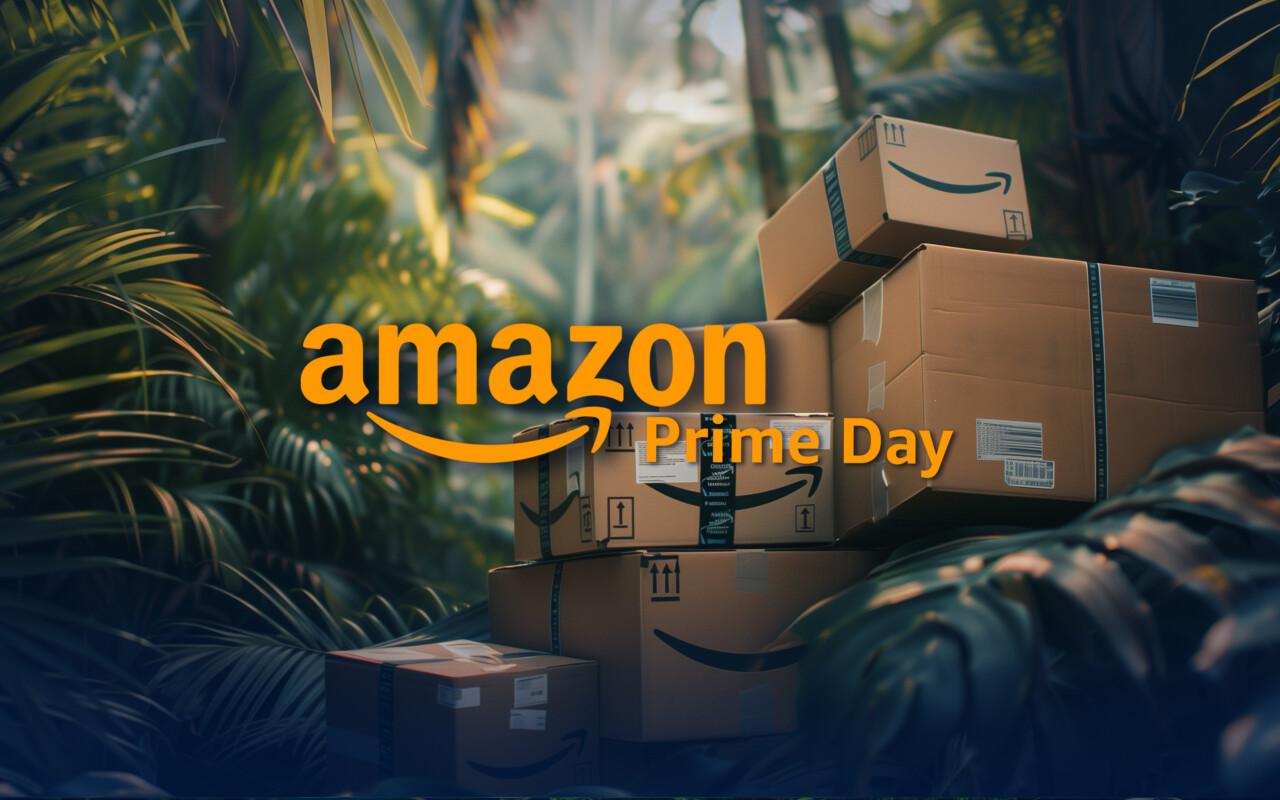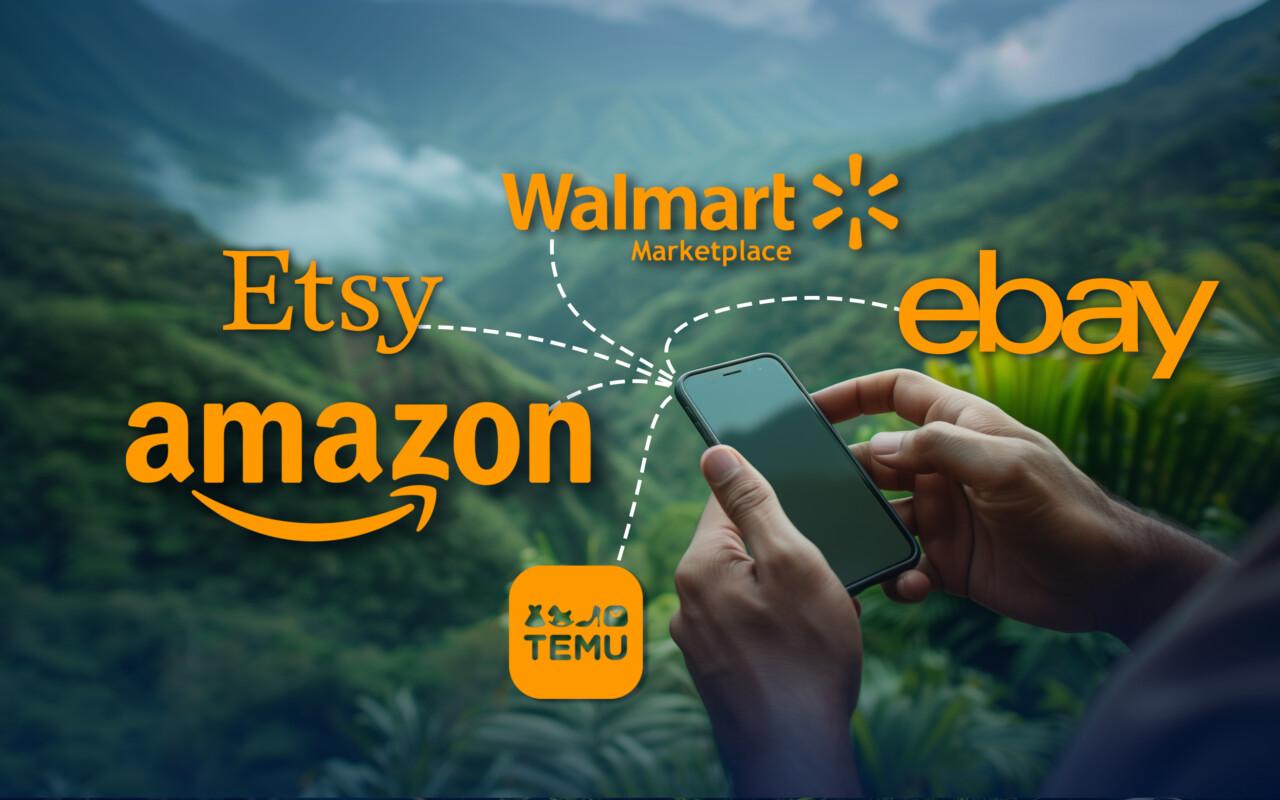How is Walmart’s online shopping platform different from Amazon? Will Walmart challenge Amazon in the US? How can I list my product for sale on the Walmart platform?
In last week’s blog, we looked at the State of the Amazon Seller 2024 study published by Jungle Scout. The study showed how Walmart’s online store was the most popular expansion destination for Amazon sellers in 2024. In this blog, we’ll take a closer look at how Walmart’s platform differs from Amazon’s and how to get your products on Walmart’s platform.
60% of Amazon sellers sold their products on at least one other channel in 2023
What is Walmart Martketplace?
Walmart Marketplace is an e-commerce platform owned and operated by Walmart. Like Amazon, Walmart Marketplace reaches hundreds of millions of shoppers in North America and has a huge financial arm to fund its growth and services. Walmart Marketplace also allows third-party sellers to list products for sale on its marketplace, similar to Amazon or eBay. However, Walmart Marketplace is important to distinguish from Walmart’s physical department stores. Selling products on the online Walmart Marketplace does not mean that products are sold in Walmart department stores.
Although Walmart Marketplace was launched back in 2009, the service has taken great strides in growth and development in the very recent years. In 2016, Walmart acquired the American online shopping platform Jet.com for $3 billion to grow its e-commerce audience and services. Since then, Walmart has entered into strategic partnerships with companies such as Microsoft to develop cloud services and digital innovation. Through this partnership, Walmart also aims to challenge Amazon’s highly popular Amazon Web Services (AWS) cloud platform. In addition, in 2020, Walmart launched its Walmart Fulfillment Service (WFS), which is fully equivalent to Amazon FBA, to support third-party sellers in logistics and returns management.
Read also: Amazon’s FBA-model – why we recommend it.
Like Amazon, Walmart has huge financial shoulders and its e-commerce business is growing every year.
Strategic partnerships and advances in service levels have led to rapid growth for the online retailer. Today, Walmart reaches over 100 million unique visitors per month and has over 150,000 third-party sellers on the platform. In 2023, the company also held its first Seller Summit to promote third-party sellers on the platform.
What do Walmart Marketplace and Amazon have in common?
What is clear is that both platforms operate on very similar principles. However, they are not identical, which is why we have compiled a list of the main factors that unite and distinguish them.
Common:
Massive customer base. Both platforms reach staggering numbers of active buyers and users. If you want to increase the visibility of your products and reach a broad range of consumers in the US, both platforms are good options.
Respected and trusted. Both Walmart and Amazon are well known and trusted players in the US market. Visibility for your products on either platform will undoubtedly drive consumer purchase intentions and a positive image of your brand.
Logistics support services. Both platforms offer third-party vendors comprehensive support in organizing logistics. Amazon’s FBA (Fulfillment by Amazon) and Walmart’s WFS (Walmart Fulfillment Service) offer sellers fully outsourced end-customer logistics.
Brand protection services. Walmart offers similar services to Amazon for brands registered on its platform. The Walmart Brand Portal offers extended brand building and protection services for trademarked brands. Compared to Amazon’s Brand Registry, the services and requirements for joining seem very consistent. However, companies considering adopting the service should note that Walmart only accepts US-registered (USPTO) trademarks for the Brand Portal, while Amazon also accepts EUIPO (or wherever the Amazon market is) registered trademarks.
Reard also: Amazon Brand Registry – why it’s worth the effort
Differences
Costs. While the two platforms operate on very similar principles, there are concrete differences in the costs of the platforms. For example, there are no fixed costs for selling on Walmart’s platform, whereas Amazon sellers pay a small fixed cost for their seller account or Vendor Agreement. Otherwise, the referral fees retained on sales between Walmart and Amazon show no significant difference.
Read also: How much do brands pay Amazon for their sales – and why?
Internationality. Where Amazon is a very international player, Walmart is strongly limited to the US. As a result, it is also more difficult for foreign companies to sell on Walmart Marketplace for the time being. Currently, Walmart Marketplace only accepts sellers from China, India, Hong Kong, England, Canada, Japan or Mexico, in addition to the US. Selling at Walmart in Finland would therefore require the company to be registered in the US or one of the above countries.
The international nature of Amazon also allows the platform to offer a more comprehensive range of services for international sellers. One example of this is Amazon’s EFN network, which allows products to be sold and delivered to all EU countries by centralising warehousing and related bureaucracy in a single country.
Starting to sell. Amazon is notoriously fast and relatively easy to get started. At Walmart, on the other hand, the length and requirements of the application process are a bit more complex. Once you meet Walmart’s minimum requirements, you can apply for a Walmart sales license. This process usually takes around 2-5 weeks, after which you can list your products on the platform if you meet the conditions.
Competition. Because of its younger age and the threshold to start selling, Walmart currently has less competition among sellers. Walmart currently has just over 150 thousand third-party sellers on its platform, compared to around 6.3 million on Amazon worldwide. In the light of this information, it would therefore be easier for the time being to differentiate on the Walmart platform.
It should also be mentioned that, although the services and the operating model of both companies appear to be similar, Amazon is still the bigger player in online shopping in the United States and internationally. Amazon’s e-commerce turnover is still several times higher than Walmart’s (50.9 billion vs. 19.2 billion) and the vast majority of US shoppers still start their product search on Amazon.
Read also: Where do you look first when considering online shopping?
How can I start to sell on Amazon Marketplace?
Before you start your application, please make sure you meet the minimum requirements below to join Walmart Marketplace:
- Business Tax ID (SSN not valid) or Business Identification Number (from approved countries).
- Supporting documents that verify your business name and address
- Previous success in online marketplaces or online store sales
- Products with GTIN/UPC GS1 company prefix numbers
- Products compliant with Walmart’s prohibited products regulations
- Logistics using Walmart Fulfillment Service (WFS), or another B2C shipping and returns warehouse in the US
Once your business meets Walmart’s minimum requirements, you are ready to apply for authorization to set up a seller account in the Walmart Seller Center. The minimum requirements for joining are subject to change, so always check the Walmart website for up-to-date information.
Getting started on Amazon is quick and relatively inexpensive, but success requires an understanding of the e-commerce giant’s business logic. Getting to the top of Amazon’s search results requires a careful strategy and continuous optimisation. Our knowledgeable journey leaders will be happy to discuss your business’s potential in the ecommerce jungle with you – feel free to contact us!



